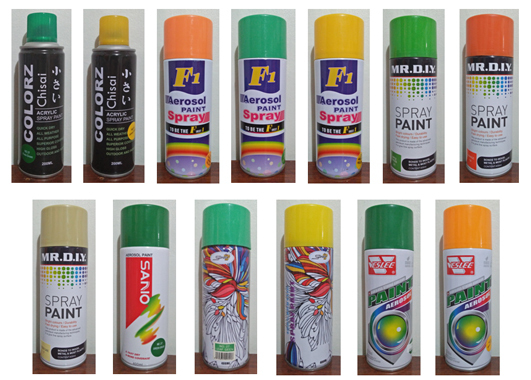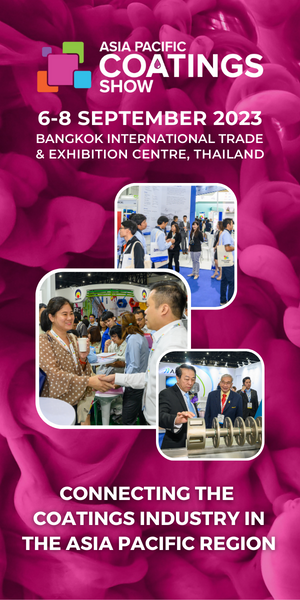
A toxics watchdog group from the Philippines has found more spray paints in the market that are contaminated with dangerously high concentrations of lead, a chemical forbidden in the manufacture of paints under the country’s law.
In a statement, the EcoWaste Coalition revealed that 13 spray paints with lead content ranging from 4500 to 56,100 parts per million (ppm) are being sold to uninformed consumers by offline and online retailers in brazen violation of the country’s lead paint regulation limiting lead to a maximum of 90 ppm.
"Our latest market investigation conducted amid the COVID-19 pandemic netted 13 more spray paints with exceedingly high levels of lead that can present a serious health hazard over time,” said Thony Dizon, Chemical Safety Campaigner, EcoWaste Coalition. "The authorities need to act with dispatch to ensure that these dangerous products are removed from the market and returned to their suppliers for environmentally sound disposal.”
This brings the total number of lead-containing aerosol paints uncovered by the group to 50, noting its discovery of 37 violative products last year that were subsequently banned by the authorities. None of these 50 leaded spray paints was produced by companies affiliated to the Philippine Association of Paint Manufacturers (PAPM)."Lead paint chips and dust are formed when a surface covered with lead paint ages, peels and breaks. Children are exposed to lead when they eat such paint chips or swallow or breathe in lead dust, which can affect their developing brains and cause reduced intelligence, learning ability and attention span, as well as increased risk of behavioural problems, such as aggressiveness, bullying and violence,” said environmental health scientist Dr. Geminn Louis C. Apostol, Assistant Professor at the Ateneo School of Medicine and Public Health. "Health experts have not determined any level of lead exposure that is deemed safe and without detrimental effects.”
Of the 13 spray paints bought from offline and online dealers by the EcoWaste Coalition and submitted to the SGS, a leading testing company, for lead content analysis, 10 were found to contain dangerously high levels of lead exceeding 10,000 ppm. Also, eight of the 13 paints lacked information about their manufacturers. Among these non-compliant spray paints with violative levels of lead are the following:
1. F1 Aerosol Spray Paint (leaf green), 56,100 ppm2. Colorz Chisai Acrylic Spray Paint (lemon yellow), 55, 200 ppm3. F1 Aerosol Spray Paint (medium yellow), 50,800 ppm4. Veslee Aerosol Paint (lemon yellow), 45,900 ppm5. Super 7 Acrylic Spray Paint (yellow), 31,200 ppm6. Veslee Aerosol Paint (green grass), 22,400 ppm7. Colorz Chisai Acrylic Spray Paint (fresh green), 18,600 ppm8. Super 7 Acrylic Spray Paint (leaf green), 13,100 ppm9. F1 Aerosol Spray Paint (fluorescent orange yellow), 11,500 ppm10. MR. D.I.Y. Spray Paint (orange), 10,400 ppm11. MR. D.I.Y. Spray Paint (sugar cane), 8,910 ppm12. MR. D.I.Y. Spray Paint (apple green), 6,820 ppm13. Sanvo Aerosol Paint (green grass), 4,500 ppmThe EcoWaste Coalition had notified the authorities about its latest findings. It had also reached out and requested retail stores to take the violative products off the shelves.
Lead compounds are used before in paint formulations to add colour, quicken the drying process, inhibit rust, and increase durability, the EcoWaste Coalition said, noting that most paint manufacturers in the country have already switched to alternative ingredients to conform to the regulation.
Recognising that lead paint is a major source of childhood lead exposure and that such exposure causes serious harm to children and other groups like women of child-bearing age and workers, the Department of Environment and Natural Resources (DENR) issued in 2013 a groundbreaking policy eliminating lead-containing paints.
With active support from the EcoWaste Coalition and the PAPM, the DENR promulgated Administrative Order 2013-24, or the Chemical Control Order for Lead and Lead Compounds, which, among other provisions, phased out lead-containing decorative paints in 2016 and lead-containing industrial paints in 2019.The DENR, PAPM and the EcoWaste Coalition are partners of the UN-backed Global Alliance to Eliminate Lead Paint whose broad objective is to promote a phase-out of the manufacture and sale of paints containing lead and eventually to eliminate the risks that such paints pose.The EcoWaste Coalition is currently completing a baseline study on the lead content of solvent-based paints sold and used for industrial applications in the Philippines, which will be released soon.




